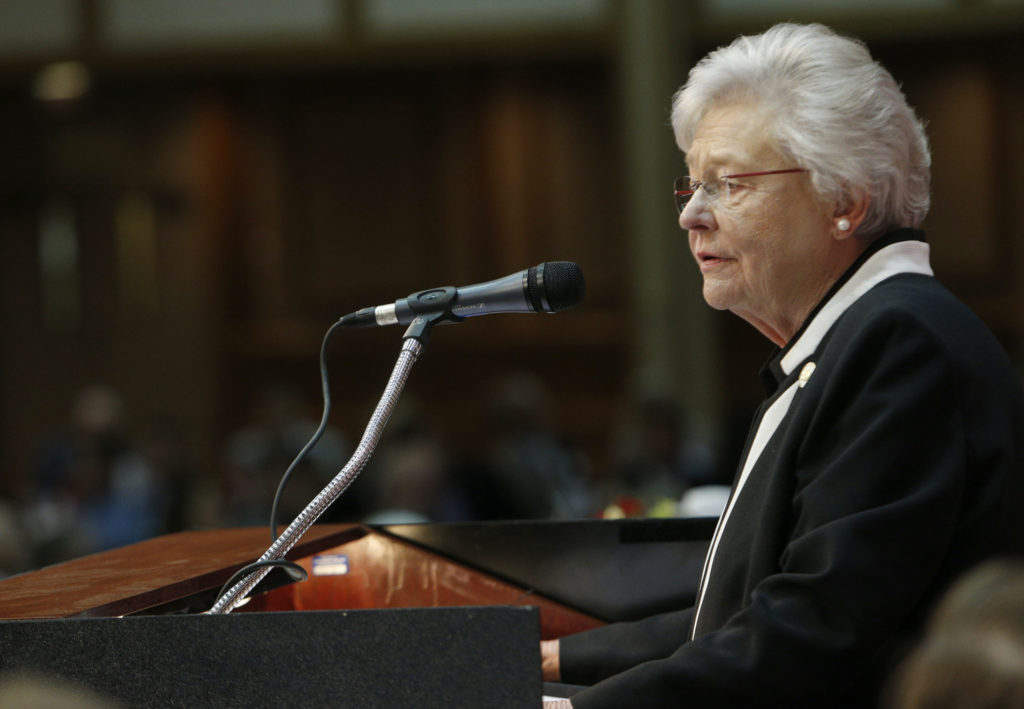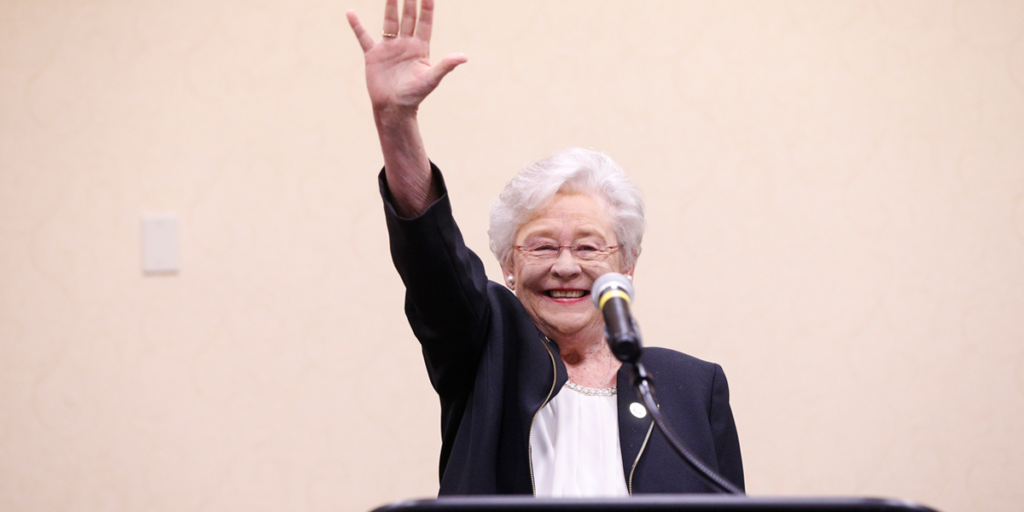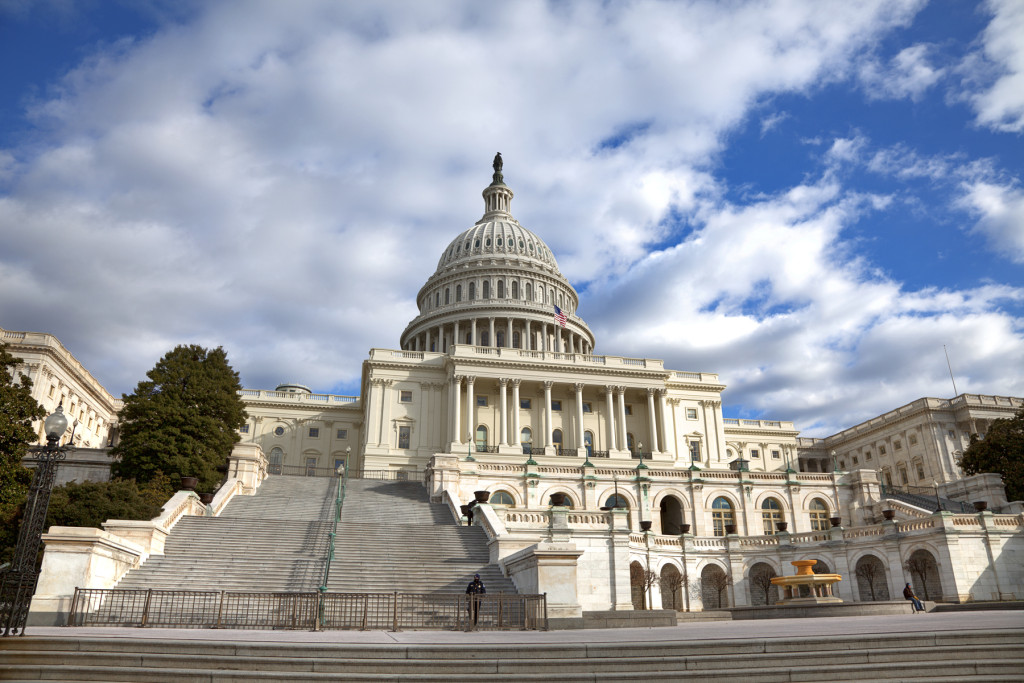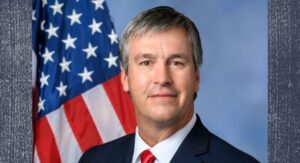Daylight saving time should be eliminated, say officials

For those dazed and confused by changing their clocks twice a year, some elected officials have proposed a solution: make daylight saving time permanent. Economists have bandied the idea over the years but in recent weeks it has gotten genuine momentum in both state capitals and Washington D.C. “I’d be extremely happy to not go home in the dark,” said Rusty Glover, a Republican state senator from Mobile, Alabama. “And I think we’d all see a little more productivity, too.” Mr. Glover sponsored a resolution this month in the Alabama legislature to keep the state on the same time all year. It breezed through both chambers and now awaits Republican Gov. Kay Ivey’s signature. “And it’s very popular, so she’d better sign it since she’s running for re-election,” Mr. Glover quipped. Indeed, the idea’s popularity extends beyond Alabama. Last week in Florida, Republican Gov. Rick Scott signed a bill that asks Washington to allow the Sunshine State to maximize its sunshine — by moving to daylight saving time permanently. Florida lawmakers beyond Tallahassee are also involved, as Sen. Marco Rubio has filed two bills in Washington: one asks that Florida’s request be approved, the second calls for the whole nation to stop changing clocks twice a year and stay on daylight saving time. Mr. Rubio made it all sound simple. “Reflecting the will of the Sunshine State, I introduced these bills that would approve Florida’s will and, if made nationally, would also ensure Florida is not out of sync with the rest of the nation,” he wrote in an email. Of course, no one can change the number of minutes the sun shines on a given slice of the planet each day. But the clock can help it seem that way. Ever since the U.S. adopted daylight saving time in March 1918, people have dealt with “springing forward” in spring and “falling back” in fall. Or, as most people understand it, losing or gaining an hour of sleep. Federal law allows states to remain on standard time year-round, and Arizona — with the exception of the Navajo Nation — spends all 12 months on Mountain Standard Time, which effectively becomes Pacific Daylight Time for the summer months. The closer one gets to the equator the more consistent the hours of sunshine are and the less changing the clocks matters, which is one reason why Hawaii and U.S. territories such as Puerto Rico and Guam leave their clocks alone. On the other hand, under the terms of the grandiosely named “Uniform Time Act of 1966,” states can only go to daylight saving time year round with Washington’s permission, a quixotic arrangement indeed. “It does seem like it’s been set up a little bit arbitrarily,” said Canadian economist Lisa Kramer. “It’s sort of a weird historical tic.” Ms. Kramer, a professor of management at the University of Toronto, said the rest of North America is in a similar situation. In Canada, Saskatchewan is the only province to keep clocks the same year-round, although Alberta, like Alabama and Florida, is seeking to go with permanent daylight saving time. There’s a movement in New England, too, toward permanent daylight saving time, Ms. Kramer said, although the tight hodgepodge of states there makes it necessary to have most or all of the states make the move at the same time. “People commute from one state to another and it wouldn’t be easy for business to be jumping from one hour to another as people moved,” she said. There are sound reasons beyond making everyone more rested for locking in daylight saving time, according to Ms. Kramer and others. Mr. Glover said he sponsored his resolution after talking with realtors and UPS and FedEx people who all favor extended sunshine as better for business. Daylight saving time has been shown to reduce traffic accident fatalities because pedestrians and cyclists, who are more prominent after work, remain easily seen longer, Ms. Kramer said. In addition to expanded commerce, some studies have shown a modest improvement in productivity, she said. Conventional wisdom holds government started tinkering with the clocks to help farmers or to save energy. But the former is mostly rural legend and studies have shown the impact on the latter to be minute. What’s more, the harm of changing clocks are linked to things like our “circadian rhythms,” and “sleep desynchronosis” — fancy terms for “internal clock.” It’s the fact there’s a difference, more than the difference itself that creates issues. Consequently, sticking to either daylight saving time or standard time obviates that problem and it makes sense to choose the longer day-sunlight option. Mr. Scott, the Florida governor, cited even more economic benefits when he signed the bill. “During my time in office, Florida has created nearly 1.5 million private-sector jobs,” he said. “A large part of this success is Florida’s booming tourism industry. Last year, a record 116.5 million visitors came to Florida. The Sunshine Protection Act allows Floridians and our visitors the ability to enjoy everything our beautiful state has to offer later in the day.” Republished with the permission of the Associated Press.
Orange Beach City Council bans short-term residential rentals

Orange Beach City Council members have voted to pass an ordinance that will ban short-term rentals in residential areas of the city. The council met Tuesday evening to discuss and vote on the ordinance. According to WPMI, city leaders made their decision in front of a packed house. In attendance were a number of realtors and homeowners who were interested in the ordinance. Under the new ordinance, residents are still able to rent out a room or home on sites such as Airbnb or VRBO (Vacation Rentals By Owner), but only if it’s for 14 or more days at a time. The new ordinance does not affect condo owners or any properties outside of a residential zone. Orange Beach now begins the process of creating a new “Vacation Rental” license which will allow homeowners to rent their own properties for 14 days or longer. Homeowners who already have the current short-term rental license will be grandfathered in but will be required to purchase a new license when their current one expires. Each license will cost around 500 dollars each year. Officials say they’re passing this ordinance as a safety measure and as a response to complaints from residents of the city; citing criminal activity, noise complaints, trash, and overflow parking. Some residents believe that the city is just looking for more sales tax revenue from condo rentals, and that this ordinance will prohibit some economic growth for the city. In 2017, Gulf Shores residents, Orange Beach’s next door neighbors, made $4.9 million and brought 27,700 guests into the coastal town using Airbnb, a short-term vacation rental company. Orange Beach is not the only Alabama city to make such a ban. In September, Mountain Brook banned all rentals less than 30 days.
People deserve debates, whether or not they get them is anyone’s guess

In life we have to do things we sometimes don’t want to do. But the fact is as adults, we have responsibilities to those around us. This is especially true of politicians. Which is why it’s so disheartening that Gov. Kay Ivey is choosing to avoid debating her Republican opponents. Granted from a political perspective she has every reason in the world not to want to get on stage for a debate. Every reason. She’s so far ahead of them in the polls, she has nowhere to go but down. It does nothing but lift their name ID and give credibility to their candidacies, blah blah blah — we all know the reasons. But the fact is, voters deserve a debate anyway. By ducking out on them, because of political realities, she’s ignoring her obligations as a statesman, a representative of the people and somebody who is asking for voter support. Will the debate be fun? Probably not. Will it be easy? Probably not. But should the Governor do it for the people? Absolutely. The fact of the matter is, the people have a right to hear from those representing them. Gov. Ivey has repeatedly said that her campaign is about taking Alabama in a new direction. It’s about starting over and restoring trust in our elected officials. In order to do that, she shouldn’t duck and hide. She should face her competitors, answer tough questions and let the voters have a sense of where she stands on issues besides the soundbites and press releases she chooses to put out. If she’s so proud of her record in “steadying the ship of state,” she needs to own it. While we don’t know if she’ll actually do what’s best for the people and participate in a debate — there’s no denying, she absolutely should.
Airport shuttle service from Birmingham to Atlanta began Sunday

A Richmond, Va. based transportation company began a shuttle service from Birmingham to the Hartsfield-Jackson Atlanta International Airport this week. The Birmingham-Shuttlesworth International Airport currently operates over 60 flights between itself and Atlanta each week, and although each flight only takes around 30 minutes (once you’re in the air) many travelers prefer to avoid the hassle of adding a connecting flight either to or from the Atlanta airport. Groome Transportation will be offering 14 daily round trips from Birmingham to Atlanta; beginning at 1 a.m. with the last shuttle leaving Birmingham at 8:30 p.m. Services to Birmingham from Hartsfield-Jackson Atlanta International Airport will be offered as well, the first shuttle will be scheduled to leave at 5:30 a.m. with the last trip leaving Atlanta at 1 a.m. according to the Birmingham Patch. Reservations are required in advance and can be purchased online or by phone; the company asks that you schedule the shuttle at least 24 hours before your trip to avoid any potential delays at the time of travel. For now, all shuttles pick passengers up at the Festival Shopping Center on Crestwood Boulevard for one way or round trip service. Adult shuttle trips cost $29 one-way and $58 for a round trip ticket. Young children, three to seven years old, cost $14 each way, while children under three ride for free.
Alabama remembers Martin Luther King, Jr., 50 years after assassination

Wednesday marks 50 years since the assassination of civil rights icon Dr. Martin Luther King, Jr. and people across the country are taking time to remember his life and legacy. A lot of King’s fight for racial equality took place in Alabama, and Yellowhammer State politicians taking a moment to remember him today. Here’s what they’re saying: Tuscaloosa Mayor and Democratic gubernatorial candidate Walt Maddox (via statement): Words are inadequate as we remember the legacy of Dr. Martin Luther King, Jr. on this the 50th Anniversary of his assassination. For most of us in public service, when it comes to honoring Dr. King, we select one of his many inspirational quotes, and we try to summarize it in a way that is reaffirming and sanitized. While intentions may be honorable, it falls woefully short of honoring an American patriot whose life was cut tragically short. [Click here to read more.] Alabama 7th District U.S. Rep. Terri Sewell (via Facebook): Today, as we remember Dr. King on the 50th anniversary of his death, I want to share one of his speeches that I believe resonates today – on the power of love. As anger and hate drive a wedge between Americans, let’s remember what Dr. King taught us, that it is love that will win our fight for justice. Love for our neighbor, love for our enemy, love correcting everything that stands against love. U.S. Sen. Doug Jones (via Facebook): Fifty years after Dr. Martin Luther King’s passing this week, each of us has a responsibility to continue to fight for the American Dream. We must honor Dr. King’s legacy by working to ensure our nation lives up to its creed of dignity, respect, equality and justice. #MLK50 Tuskegee-Democrat State Rep. Pebblin Warren (via Facebook): Today is my birthday and the day Dr. Martin Luther King was assassinated on my 16th Birthday. Over the years I have been truly blessed to come from cotton fields in Georgia to the State House in Alabama. I have had my shares of ups and downs but through it all my faith has carried me through. I was born in the house below by a midwife. Back in the day the kitchen was separated from the house. I am so thankful to my mother who had an 8th grade education, but wisdom unmeasurable. My father died when I was 6 and 6 days old. Mama instilled getting an education, strong work habits, strong religious beliefs and to help where ever you can. I am so thankful to my husband, children and grand children for their undying LOVE. My prayer is that God will continue to bless me with good health, mind and soul for many more years to come. Alabama 1st District U.S. Rep. Bradley Byrne (via Facebook): Today we remember the life and legacy of Dr. Martin Luther King, Jr. Dr. King’s “I’ve Been to the Mountaintop” speech was his final address before his assassination in 1968. Fifty years later, we continue work to promote equal opportunities for all and keep his dream alive. #MLK50 This article will continue to be updated throughout the day.
Mural of Donald Trump with gun, bloody school children painted over

A mural depicting President Donald Trump holding a handgun and school children in pools of blood has been painted over after it appeared in an Alabama city. WAAY-TV quotes Florence Mayor Steve Holt in a Tuesday report as saying that the mural was on private property and that its owner told the city they could paint over it. News outlets report the mural was painted sometime Sunday night or Monday morning. The mural was displayed on a wall in an abandoned lot in the city’s downtown. Republished with the permission of the Associated Press.
Kay Ivey dominates fundraising in gubernatorial race

Gov. Kay Ivey appears to be benefiting from the power of incumbency when it comes to fundraising in her quest to win election to the Governor’s office for the first time. Campaign finance reports filed Tuesday, show Ivey surpassed the $3 million mark by raising $402,000 in March. Bringing her total up to over $1 million more than any other candidate in the June 5 Republican primary. Ivey’s biggest contributors, all giving contributions totaling $25,000, were Blue Cross Blue Shield of Alabama, Ozark Striping Co, Inc., and the Alabama Forestry PAC. A look a Ivey’s GOP opponents: Huntsville Mayor Tommy Battle raised a $137,000 in March giving him a total of $1.8 million in financing; Mobile-Republican State Sen.. Bill Hightower raised $71,000 in March taking his fundraising total to $860,847; Evangelist Scott Dawson raised $92,000 in March, bringing his total to $731,782 for his campaign. On the Democratic side Tuscaloosa Mayor Walt Maddox has a slight fundraising edge over former Chief Justice Sue Bell Cobb. Maddox reported raising $114,000 in March, bringing his total up to $554,857; Meanwhile Cobb reported raising $78,000 in March, for a total of $517,380. Although she has come under fire lately for her unwillingness to debate her fellow gubernatorial candidates, Ivey still holds the top spot in the polls, and in fundraising. Both the Republican and Democratic primaries will be held June 5. The Associated Press contributed to this story.
Donald Trump says ‘strong action’ coming on immigration

President Donald Trump pledged “strong action today” on immigration, a day after he said he wants to use the military to secure the U.S.-Mexico border until his “big, beautiful wall” is erected. In an early-morning tweet Wednesday, Trump said “Our Border Laws are very weak” and said Democrats “stand in our way” of new laws. He added “We will be taking strong action today.” Trump did not offer further details and the White House did not immediately respond to requests for comment. Trump told reporters on Tuesday that he’s been discussing the idea of using the military at the border with Defense Secretary Jim Mattis. “We’re going to be doing things militarily. Until we can have a wall and proper security, we’re going to be guarding our border with the military,” Trump said, calling the move a “big step.” It wasn’t immediately clear exactly how the proposal would work or what kind of troops Trump wanted to deploy, but the White House later said Trump wanted to mobilize the National Guard. Federal law prohibits the use of active-duty service members for law enforcement inside the U.S., unless specifically authorized by Congress. But over the past 12 years, presidents have twice sent National Guard troops to the border to bolster security and assist with surveillance and other support. The White House counsel’s office has been working on the idea for several weeks, according to a senior official who spoke on condition of anonymity to discuss internal plans. Trump has been frustrated by slow action on building a wall along the Mexican border. He’s previously suggested using the Pentagon’s budget to pay for the wall, arguing it is a national security priority, despite strict rules that prohibit spending that’s not authorized by Congress. At the Pentagon, officials struggled throughout the day Tuesday to answer questions about the plan, including rudimentary details on whether it would involve National Guard members. But the administration appeared to be considering a model similar to a 2006 operation in which President George W. Bush deployed National Guard troops to the southern border. Under Operation Jump Start, 6,000 National Guard troops were sent to assist the border patrol with non-law enforcement duties while additional border agents were hired and trained. Over two years, about 29,000 National Guard forces participated as forces rotated in and out. The Guard members were used for surveillance, communications, administrative support, intelligence, analysis and the installation of border security infrastructure. In addition, President Barack Obama sent about 1,200 National Guard troops to the U.S.-Mexico border in 2010 to beef up efforts against drug smuggling and illegal immigration. Texas also deployed military forces to its 800-mile (1,290-kilometer) border with Mexico. Former Texas Gov. Rick Perry, now Trump’s energy secretary, sent 1,000 Texas National Guardsmen to the Rio Grande Valley in 2014 in response to a sharp increase in Central American children crossing the border alone. Trump met Tuesday with top administration officials, including Mattis, Homeland Security Secretary Kirstjen Nielsen and Attorney General Jeff Sessions, to discuss the administration’s strategy to address what White House spokeswoman Sarah Huckabee Sanders described as “the growing influx of illegal immigration, drugs and violent gang members from Central America.” In addition to mobilizing the National Guard, Trump and senior officials “agreed on the need to pressure Congress to urgently pass legislation to close legal loopholes exploited by criminal trafficking, narco-terrorist and smuggling organizations,” Sanders said. Trump has been fixated on the issue since he grudgingly signed a spending bill last month that includes far less money for the wall than he’d hoped for. The $1.3 trillion package included $1.6 billion for border wall spending — a fraction of the $25 billion Trump made a last-minute push to secure. And much of that money can be used only to repair existing segments, not to build new sections. Trump spent the first months of his presidency bragging about a dramatic drop in illegal border crossings. Indeed, the 2017 fiscal year marked a 45-year low for Border Patrol arrests. But the numbers have been slowly ticking up since last April and are now on par with many months of the Obama administration. Statistics show 36,695 arrests of people trying to cross the southwest border in February 2018, up from 23,555 in the same month of the previous year. At last week’s meeting, Trump “directed a vigorous administrative strategy to confront this threat and protect America’s national security,” said Sanders. Tuesday’s briefing was a follow-up to discuss the plans. Trump appeared to claim credit Tuesday for halting a caravan of about 1,100 migrants, many from Honduras, who had been marching along roadsides and train tracks in the southern Mexican state of Oaxaca. “I said (to Mexican officials), ‘I hope you’re going to tell that caravan not to get up to the border.’ And I think they’re doing that because, as of 12 minutes ago, it was all being broken up,” he said. But the caravan of largely Central American migrants had never intended to reach the U.S. border, according to organizer Irineo Mujica. It was meant to end at a migrants’ rights symposium in central Mexico later this week. The caravan stopped to camp at a sports field in Oaxaca over the weekend. Mexican immigration officers have been signing them up for temporary transit visas, which would allow them to travel to the U.S. border, possibly to seek asylum, or to seek asylum status in Mexico. Republished with the permission of the Associated Press.
Facing heat at home, GOP leaders may rescind some spending

As Republicans run into a buzz saw of conservative criticism over a deficit-expanding new budget, GOP leaders and the White House are looking for ways to undo the damage by allowing President Donald Trump to rescind some of the spending he signed into law just 10 days ago. Rolling back the funds would be a highly unusual move and could put some lawmakers in the potentially uncomfortable position of having to vote for specific spending opposed by a president from their party. But it would also offer Republicans a way to save face amid the backlash over the bill that conservatives, and Trump himself, complain gives too much money for Democratic priorities. Trump has been talking with House Majority Leader Kevin McCarthy, R-Calif., about the plan over the past couple of days, according to an aide to the House leader who spoke on condition of anonymity to discuss the private talks. It is not clear how widely the idea has been embraced by other top Republicans, including House Speaker Paul Ryan or Senate Majority Leader Mitch McConnell, whose offices declined to discuss it. “There are conversations right now,” said Matt Sparks, a spokesman for McCarthy. “The administration and Congress and McCarthy are talking about it.” The idea emerged as lawmakers get hammered back home for the $1.3 trillion spending package that, while beefing up funds for the military, also increases spending on transportation, child care and other domestic programs in a compromise with Democrats that Trump derided as a “waste” and “giveaways.” Trump’s decision to sign the bill into law, after openly toying with a veto, has not quelled the unrest and may have helped fuel it. “People are mad as hell about it and mad as hell that they put the president in that situation — that he sign the bill or shut the government down,” said Amy Kremer, a founder of the tea party and co-chairman of Women for Trump. Kremer said Republicans in Congress have lost sight of the voters who propelled them to the majority on an agenda of fiscal restraint. “They are no better than the Democrats,” she said. Lawmakers home on spring recess are feeling the brunt of the criticism. Rep. Mark Amodei, R-Nev., said he encountered a finger-wagging voter back home almost as soon as he stepped off the airplane. Fox News host Sean Hannity asked, “What happened to the Republican Party?” after Trump signed the bill. “Republicans should be ashamed of themselves,” he added. In some ways, the rescission proposal is as close as Trump can get to the line-item veto, which he called on Congress to enact even though the Supreme Court decided in 1998 that it would violate the authority the Constitution gives Congress on legislation. The idea centers on a rarely used provision of the 1974 Congressional Budget and Impound Control Act. It allows the White House to propose rescinding funds and sets a 45-day clock for the House and Senate to vote. Congress could simply ignore the president’s request and keep the funds in place. Sparks didn’t specify how much spending could be rescinded or in what categories. But Trump would likely seek to focus on domestic spending he has attacked in recent tweets. Trump has been particularly upset the package did not include $25 billion he sought for the border wall with Mexico, even after the bill burst through previously set budget caps for military and domestic spending. Ryan and Trump have not yet talked this week, an aide to the speaker said, but likely will by week’s end. Voting, though, could be difficult, even for fiscally conservative Republicans, since Trump’s targets may be popular projects or programs back home, said Gordon Gray, the director of Fiscal Policy at the center-right American Action Forum, who notes the rescission tool is not as popular as it was when introduced in the Nixon era more than 40 years ago. Passage would not be certain, especially in the Senate, where Republicans hold a slim 51-49 majority. Republished with the permission of the Associated Press.
Google schedules groundbreaking on Alabama Data Center

Construction crews will break ground Monday, April 9 on a new $600 million Google data center in Jackson County, Ala. The Alabama Data Center is being built on 350-acres off of County Road 96 in Bridgeport, Ala on the on the grounds of TVA’s Widows Creek Steam Plant. The site will be the internet giant’s newest U.S. Data Center. It is expected to add upwards of 100 well-paying jobs with highly technical skill sets, including computer technicians, system administrators, software technicians and engineers in Jackson County. Google announced plans to construct a Data Center in Jackson County on June 24, 2015. Its 14th data center site globally, Google’s Alabama Data Center will represent the eighth of its kind in the U.S. and only the second new U.S. site since 2007. Upon completion, employees of the center will work to keep Google Search, Gmail, YouTube and many other Google applications operational 24-hours a day for users across the globe. According to the Alabama Department of Commerce, “at the Jackson County site, Google will repurpose TVA’s decommissioned coal-fired Widows Creek Power Plant. And like nearly all of the tech giant’s other data centers, the facility in Bridgeport will be 100 percent powered by renewable energy — at no cost to efficiency.” The invitation-only event includes guests Gov. Kay Ivey, Alabama 5th District U.S. Rep. Mo Brooks, Google representatives and leadership, Jackson County elected officials, Jackson County school district leadership, along with business and community leaders.
US proposes tariffs on $50 billion in Chinese imports

The Trump administration on Tuesday escalated its aggressive actions on trade by proposing 25 percent tariffs on $50 billion in Chinese imports to protest Beijing’s policies that require foreign companies to hand over their technology. China immediately said it would retaliate against the new tariffs, which target high-tech industries that Beijing has been nurturing, from advanced manufacturing and aerospace to information technology and robotics. The Office of the U.S. Trade Representative issued a list targeting 1,300 Chinese products, including industrial robots and telecommunications equipment. The suggested tariffs wouldn’t take effect right away: A public comment period will last until May 11, and a hearing on the tariffs is set for May 15. Companies and consumers will have the opportunity to lobby to have some products taken off the list or have others added. The latest U.S. move risks heightening trade tensions with China, which on Monday had slapped taxes on $3 billion in U.S. products in response to earlier U.S. tariffs on steel and aluminum imports. “China’s going to be compelled to lash back,” warned Philip Levy, a senior fellow at the Chicago Council on Global Affairs and an economic adviser to President George W. Bush. The cherry industry in Washington state is worried its exports to China will be hurt by a growing trade war that escalated Monday when that country raised import duties on a $3 billion list of products. (April 3) Early Wednesday in Beijing, China’s Commerce Ministry said it “strongly condemns and firmly opposes” the proposed U.S. tariffs and warned of retaliatory action. “We will prepare equal measures for U.S. products with the same scale” according to regulations in Chinese trade law, a ministry spokesman said in comments carried by the official Xinhua News Agency. The U.S. sanctions are intended to punish China for deploying strong-arm tactics in its drive to become a global technology power. These include pressuring American companies to share technology to gain access to the Chinese market, forcing U.S. firms to license their technology in China on unfavorable terms and even hacking into U.S. companies’ computers to steal trade secrets. The administration sought to draw up the list of targeted Chinese goods in a way that might limit the impact of the tariffs — a tax on imports — on American consumers while hitting Chinese imports that benefit from Beijing’s sharp-elbowed tech policies. But some critics warned that Americans will end up being hurt. “If you’re hitting $50 billion in trade, you’re inevitably going to hurt somebody, and somebody is going to complain,” said Rod Hunter, a former economic official at the National Security Council and now a partner at Baker & McKenzie LLP. Kathy Bostjancic of Oxford Economics predicted that the tariffs “would have just a marginal impact on the U.S. economy” — unless they spark “a tit-for-tat retaliation that results in a broad-based global trade war.” Representatives of American business, which have complained for years that China has pilfered U.S. technology and discriminated against U.S. companies, were nevertheless critical of the administration’s latest action. “Unilateral tariffs may do more harm than good and do little to address the problems in China’s (intellectual property) and tech transfer policies,” said John Frisbie, president of the U.S.-China Business Council. Even some technology groups that are contending directly with Chinese competition expressed misgivings. “The Trump administration is right to push back against China’s abuse of economic and trade policy,” said Robert Atkinson, president of the Information Technology and Innovation Foundation think tank. However, he said the proposed U.S. tariffs “would hurt companies in the U.S. by raising the prices and reducing consumption of the capital equipment they rely on to produce their goods and services.” “The focus should be on things that will create the most leverage over China without raising prices and dampening investment in the kinds of machinery, equipment, and other technology that drives innovation and productivity across the economy,” Atkinson added. The United States has become increasingly frustrated with China’s aggressive efforts to overtake American technological supremacy. And many have argued that Washington needed to respond aggressively. “The Chinese are bad trading partners because they steal intellectual property,” said Derek Scissors, a China specialist at the conservative American Enterprise Institute. In January, a federal court in Wisconsin convicted a Chinese manufacturer of wind turbines, Sinovel Wind Group, of stealing trade secrets from the American company AMSC and nearly putting it out of business. And in 2014, a Pennsylvania grand jury indicted five officers in the Chinese People’s Liberation Army on charges of hacking into the computers of Westinghouse, US Steel and other major American companies to steal information that would benefit their Chinese competitors. To target China, Trump dusted off a Cold War weapon for trade disputes: Section 301 of the U.S. Trade Act of 1974, which lets the president unilaterally impose tariffs. It was meant for a world in which much of global commerce wasn’t covered by trade agreements. With the arrival in 1995 of the Geneva-based World Trade Organization, Section 301 largely faded from use. Dean Pinkert of the law firm Hughes Hubbard & Reed, found it reassuring that the administration didn’t completely bypass the WTO: As part of its complaint, the U.S. is bringing a WTO case against Chinese licensing policies that put U.S. companies at a disadvantage. China has been urging the United States to seek a negotiated solution and warning that it would retaliate against any trade sanctions. Beijing could counterpunch by targeting American businesses that depend on the Chinese market: Aircraft manufacturer Boeing, for instance, or American soybean farmers, who send nearly 60 percent of their exports to China. Rural America has been especially worried about the risk of a trade war. Farmers are especially vulnerable targets in trade spats because they rely so much on foreign sales. “Beijing right now is trying to motivate US stakeholders to press the Trump Administration to enter into direct negotiations with China and reach a settlement before tariffs are imposed,” the Eurasia Group consultancy said in a
Huntsville scientists find colon polyp marker, could lead to an end of some colonoscopies

Huntsville-based HudsonAlpha Institute for Biotechnology researchers have discovered a measurable indicator in blood plasma that could identify patients who have colon polyps. The finding is an important first step in developing a blood test to screen for colon polyps that could become cancerous or even for colon cancer. The study was published online last week in Clinical Cancer Research, a publication of the American Association for Cancer Research. “A blood test that fulfills the role currently played by colonoscopies would have major positive impacts,” said Brian Roberts, a senior scientist in the Myers Lab at HudsonAlpha and the lead author for the published study. “A lot of people joke about how they’d love to avoid the discomfort of colonoscopies,” he said, “but there’s a serious issue with people not actually getting screened.” According to the American Cancer Society, of the adults age 50 and older for whom physicians recommend a colonoscopy screening, only about 65 percent comply. For the project, Roberts and a group of scientists from four labs across HudsonAlpha studied small RNA – short strands of ribonucleic acid – in blood plasma collected from patients at the University of Alabama at Birmingham (UAB) School of Medicine. The sample collection was part of a collaboration with Dr. Robert Kimberly and Meredith Fitz-Gerald at the Center for Clinical and Translational Science at UAB; and Dr. C. Mel Wilcox, director of the Gastroenterology and Hepatology Division in the Department of Medicine at UAB. RNA is present in all cells, and while its best-known role is to act as a messenger carrying instructions from DNA for making proteins, the RNA types found in this study have diverse and complex functions. The team focused on “cell-free” RNA, found outside of cells in the liquid portion of blood, called plasma. Differences in the amount of certain cell-free RNA molecules identified patients with colorectal adenomas from those without. Colorectal adenomas are the type of colon polyp that can turn into cancer. The patients in the study were a diverse group, representing nearly equal numbers of men and women mostly over 50 years old, with some younger patients as well. In addition, about 30 percent of the patients were African-American, which means the RNA measurement method described in the paper works nearly equally well for men and women of both African and European descent, across a range of ages. In the short term, these findings won’t affect patient care, according to Richard Myers, president and science director at HudsonAlpha. The study was conducted in the Myers Lab at HudsonAlpha, where Myers is also a faculty investigator. “There’s a lot more work to do before patients might see a test like this at the clinic, but we’re optimistic that with more research and after clinical trials, eventually, we will see blood-based screening for colon polyps and colon cancer itself offered routinely to patients,” Myers said. Moving forward, the group is considering other physical markers that could be measured in blood, such as cell-free DNA, proteins or immune system measurements, that could add to the RNA signature found in their study. They are also looking to repeat the study in a larger patient population. In addition to Roberts and Myers, HudsonAlpha researchers who worked on the study include Andrew Hardigan, Dianna Moore, Ryne Ramaker, Angela Jones and Greg Cooper. Republished with permission from the Alabama NewsCenter.


